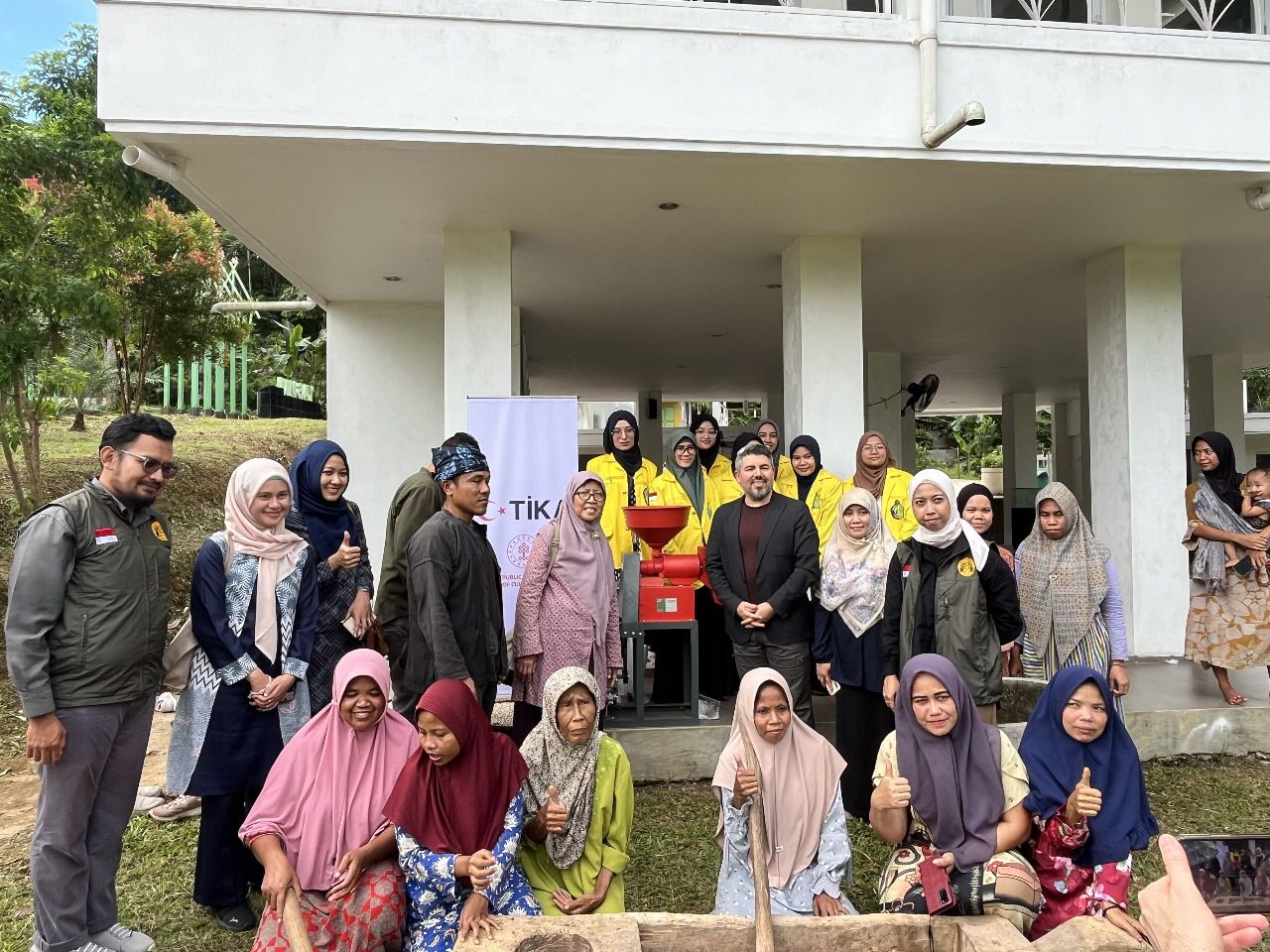Five students of the Geology Study Program of the Faculty of Mathematics and Natural Sciences (FMIPA) of University of Indonesia (UI), also members of the TSUSI (Integrated Tsunami) team, won the international earth science competition, Youth Program Competition, a pre-event of The 5th Geotourism Festival and International Conference. The five of them, M. Badhar Gibran, Abigail Priskila, Marlina Tjendra, Rifqy Fadhillah Maulana, and Salsa Bila Putri Maharani, managed to stand out of 160 other participants coming from universities in Indonesia, Malaysia, and France.
Banyuwangi Regent, Ipuk Fiestiandani Azwar Anas, symbolically handed over the prizes for the competition at the Banyuwangi Polytechnic, East Java on Monday, July 1, 2024. Prof. Dede Djuhana, Ph.D., the Dean of FMIPA UI, appreciated the TSUSI team’s achievements. She emphasized that the innovation the TSUSI team introduced does not only focus on improving disaster preparedness, but also demonstrates the importance of integrating the latest monitoring technology with conservation efforts in geotourism areas.
“This innovation does not only give better protection to the public and tourists in the Ujung Kulon Geopark area, but also shows our commitment to combine technological superiority with deep scientific understanding about the importance of the safety aspect and environmental conservation in the context of geotourism,” said Prof. Dede.
Under the guidance of the Geology Study Program teaching staff, Twin Hosea W. Kristyanto, M.T., this team designed a revolutionary innovation to strengthen mitigation and disaster management, especially volcanic tsunami. This innovation design was titled “Skema Sistem Pemantauan Tsunami Vulkanik Terpadu Gunung Api Krakatau untuk Mitigasi Bencana di Wilayah Geowisata: Sebuah Usulan.”
The Krakatoa Volcano and Ujung Kulon Geopark are both areas that are linked to one another. Geographically, Ujung Kulon Geopark is a region located northwest of Krakatoa, enabling direct influence from eruptions and volcanic activity in the Ujung Kulon Geopark area. This has been proven by the volcanic tsunami sediment in the Ujung Kulon Geopark area. The relationship between Mount Krakatoa and the Ujung Kulon Geopark shows the importance of understanding and planning mitigation of volcanic tsunami disasters that may occur again.
For that purpose, a new scheme for an integrated volcanic tsunami monitoring system for Mount Krakatoa is needed. One of the applicable methods in creating the new scheme is remote sensing, which is by making a disaster vulnerability identification map combined with bathymetric condition data and distribution of lava flow directions to prove the assumption that the Ujung Kulon Geopark is prone to tsunamis and/or volcanic tsunamis.
“The idea for the design began by looking at the condition of one of the geoparks in Indonesia, Ujung Kulon Geopark in Pandeglang Regency, Banten Province. This Geopark has great potential to experience volcanic tsunamis caused by Mount Krakatoa,” said team leader, M. Badhar Gibran.
This research uses the monitoring method by utilizing 6 parameters which will generate 3 vulnerability zone maps, including bathymetric maps derived from bathymetric condition data, lava flow maps derived from lava flow direction distribution data, and tsunami-prone zone maps derived from slope gradient, height, distance from rivers, and coastline data. The result of the research gave birth to a volcanic tsunami hazard monitoring scheme idea for Mount Krakatoa, hoped to be a preservation effort of Ujung Kulon Geopark.
Next, remote sensing data processing was also carried out to produce bathymetric maps, distribution of flow directions, and tsunami-prone zones. “There is a need to develop a more comprehensive volcanic tsunami monitoring system on Mount Krakatoa, so this research aims to propose an integrated volcanic tsunami monitoring system,” said Gibran.
Furthermore, Gibran explained that slope gradient, height, distance from rivers, and coastline data are modeled using the Analytics Hirarcies Process (AHP) approach and produce a map showing the range of potential tsunami-prone zones consisting of very vulnerable, vulnerable, and non-vulnerable zones. Based on the map, zones with potential tsunami risk are given disaster mitigation recommendations.
Meanwhile, areas with low tsunami potential levels are gathered into one disaster database. The scheme is then tested in the Mount Krakatoa and Ujung Kulon Geopark which produce a tsunami hazard vulnerability map complete with monitoring results for each parameter. This monitoring scheme is hoped to become a consideration to strengthen mitigation and volcanic tsunami disaster management at Mount Krakatoa and tsunami disaster mitigation efforts in the Ujung Kulon Geopark area.
Innovation in natural disaster monitoring allows preparedness in dealing with disaster threats, as well as maintaining and preserving the beauty of nature. “We hope this proposal can be followed up by the Geopark managers, especially Ujung Kulon Geopark. We plan to explore cooperation with the Center for Volcanology and Geological Disaster Mitigation (PVMBG) to allow the development of this scheme as part of the volcanic tsunami disaster mitigation efforts in Indonesia,” said Gibran.



